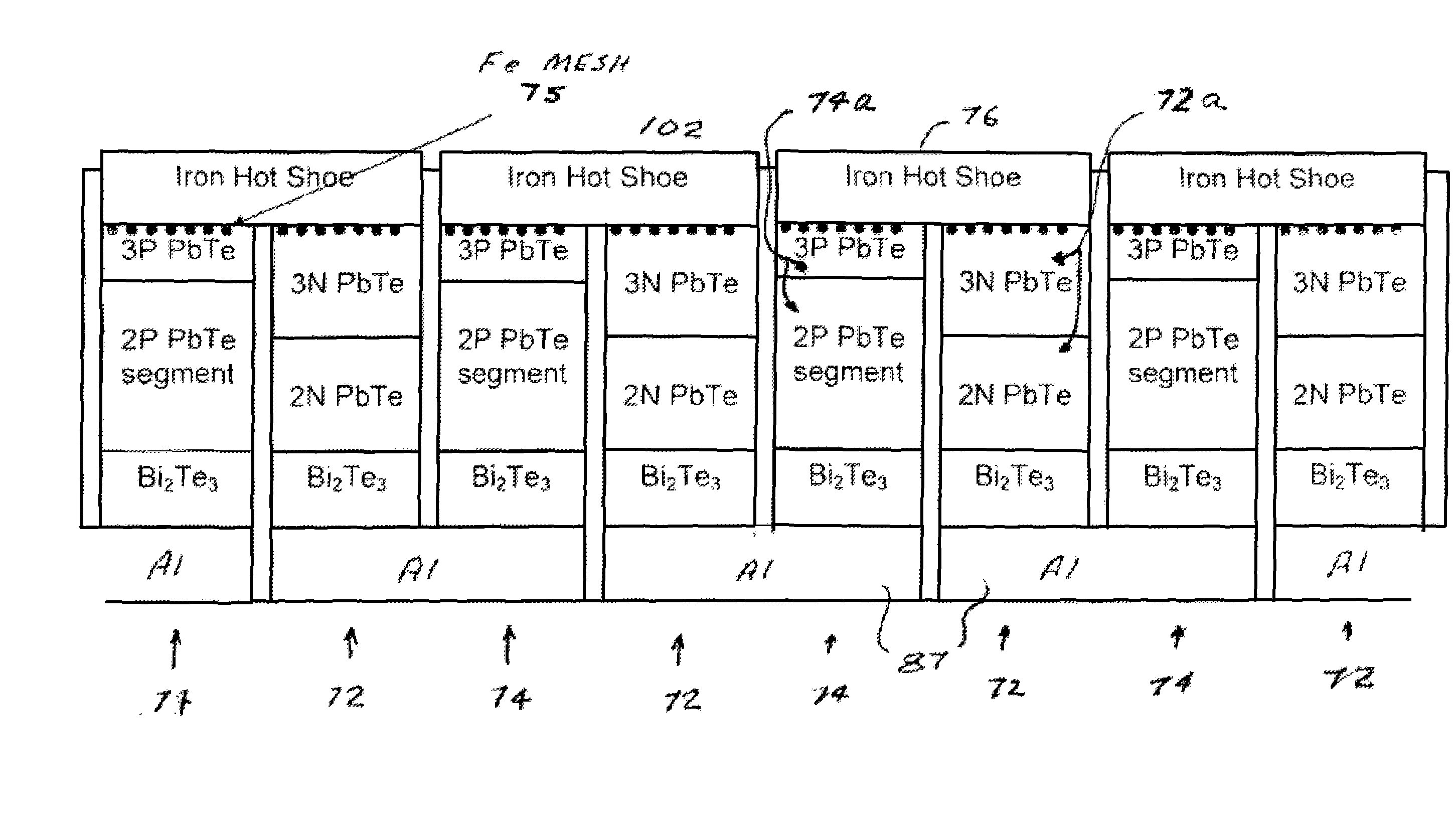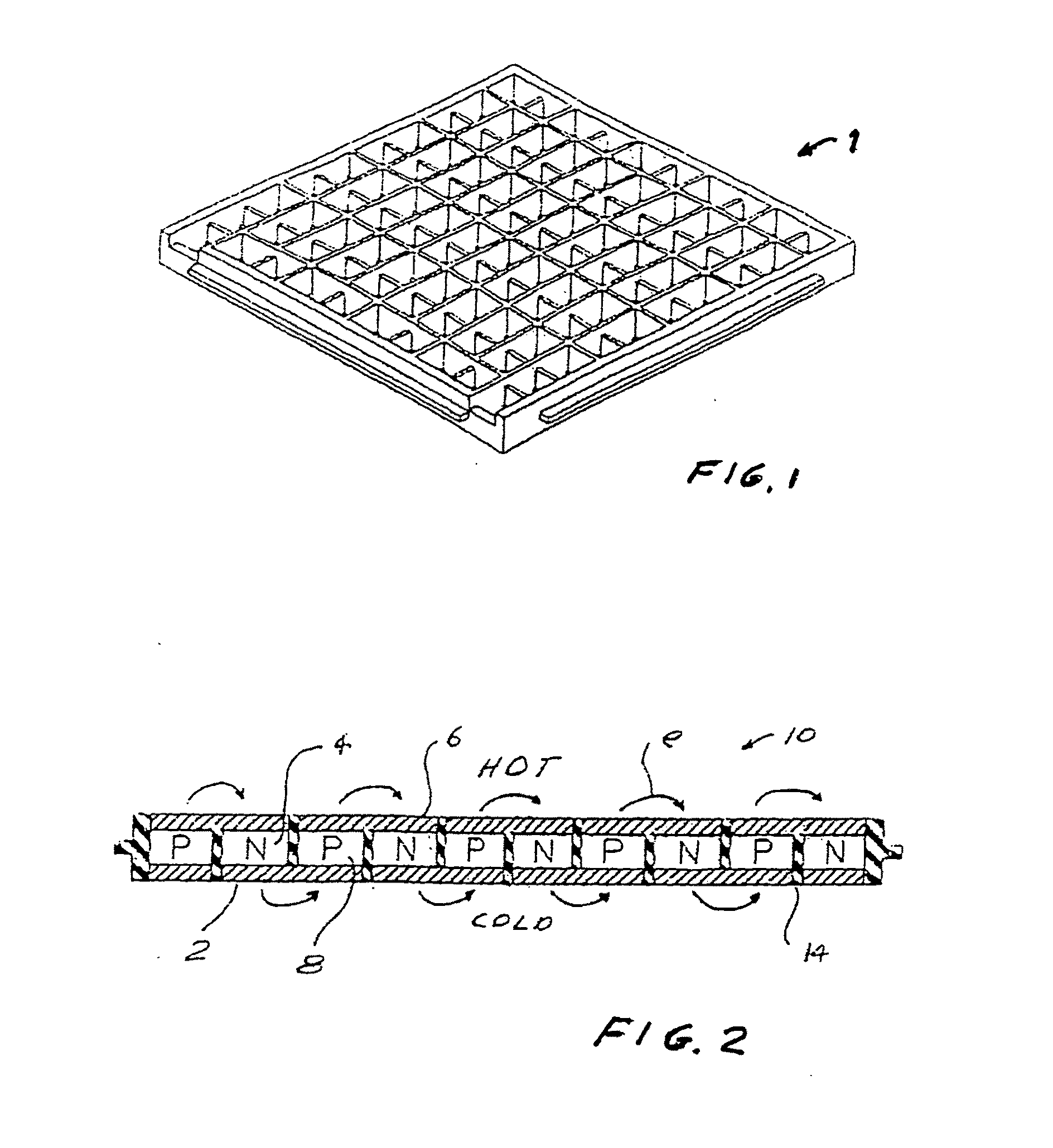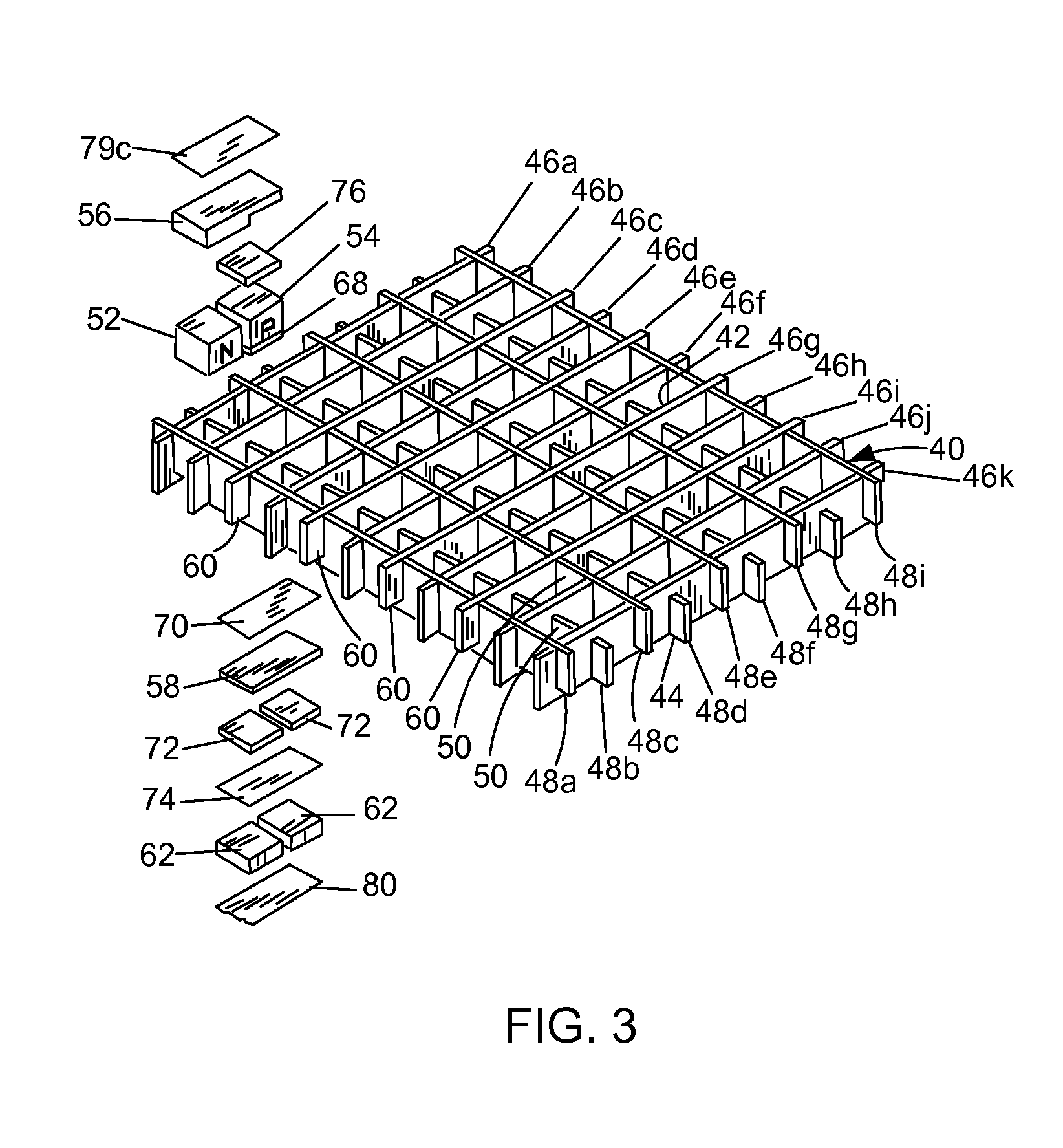High temperature, high efficiency thermoelectric module
a thermoelectric module, high-efficiency technology, applied in the direction of thermoelectric device junction materials, thermoelectric device manufacture/treatment, electrical apparatus, etc., can solve the problems of mica, marginal strength, easy cracking, and low thermoelectric efficiency, so as to reduce thermal conductivity, increase zt, and prevent grain growth
- Summary
- Abstract
- Description
- Claims
- Application Information
AI Technical Summary
Benefits of technology
Problems solved by technology
Method used
Image
Examples
first preferred embodiment
[0040]A first preferred embodiment of the present invention can be described by reference to FIGS. 4, 4A and 7. The FIGS. 4 and 4A drawings are from the parent application Ser. No. 12 / 317,170, but this first preferred module is substantially improved and more efficient version than the embodiment described in parent patent application which has been incorporated herein by reference. For example one significant difference is that the first preferred embodiment in this application utilizes three-segment thermoelectric legs in the module instead of only two. Specifically, for this preferred embodiment segments 72a and 74a as shown in FIGS. 4 and 4A are each comprised of two types of lead telluride material instead of only one type as in the parent application. This preferred embodiment is shown more specifically in FIG. 7 where the two types of lead telluride material in each leg are clearly shown. Details regarding the legs are provided below in the section entitled “Three Segment The...
PUM
| Property | Measurement | Unit |
|---|---|---|
| temperatures | aaaaa | aaaaa |
| temperature | aaaaa | aaaaa |
| temperature | aaaaa | aaaaa |
Abstract
Description
Claims
Application Information
 Login to View More
Login to View More - R&D
- Intellectual Property
- Life Sciences
- Materials
- Tech Scout
- Unparalleled Data Quality
- Higher Quality Content
- 60% Fewer Hallucinations
Browse by: Latest US Patents, China's latest patents, Technical Efficacy Thesaurus, Application Domain, Technology Topic, Popular Technical Reports.
© 2025 PatSnap. All rights reserved.Legal|Privacy policy|Modern Slavery Act Transparency Statement|Sitemap|About US| Contact US: help@patsnap.com



